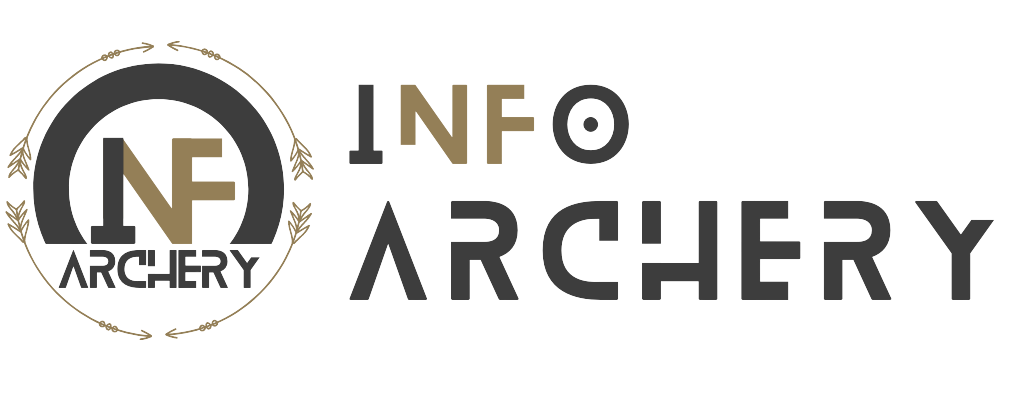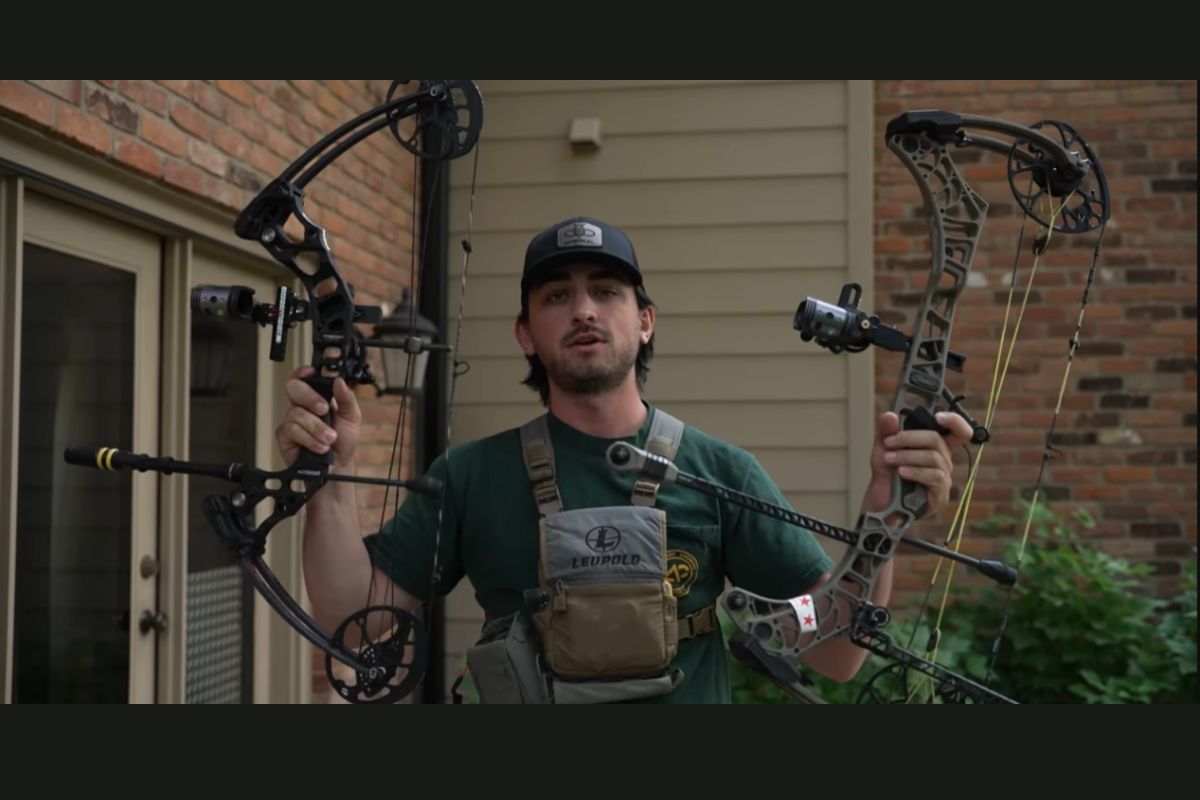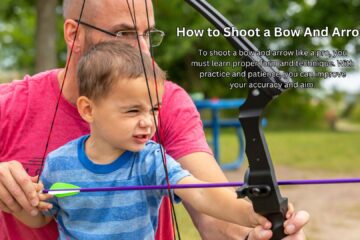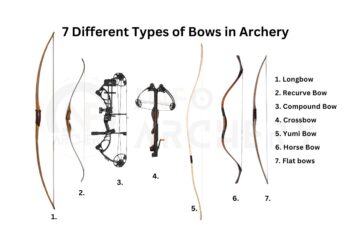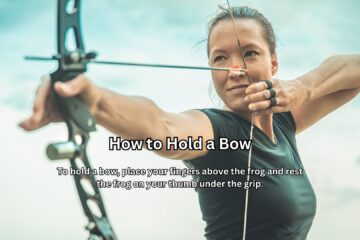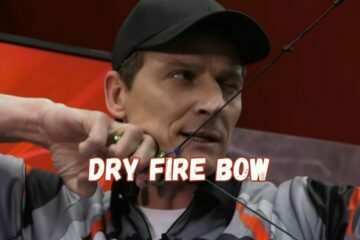How Much Does a Bow Cost? A bow typically costs between $50 to $1,500. Prices vary depending on the type, quality, and brand of the bow.
Archery is a popular sport that requires focus and skill. Whether you’re a beginner or an experienced archer, finding the right bow is essential to improve your performance. Bows come in different sizes and shapes, designed for various purposes such as hunting, target shooting, or competition.
They can be made of various materials such as wood, carbon, or aluminum and can feature additional equipment such as sights, stabilizers, and arrow rests. A good bow is an investment that can last for years and improve your accuracy, speed, and enjoyment of the sport. In this article, we will explore the different types of bows and their costs to help you find the perfect one for your needs and budget.
Unlock The Mystery: How Much Does A Bow Cost?
Are you interested in starting archery and wondering about the cost of a bow? The answer may surprise you. Depending on the type and quality of the bow, prices can range from as low as $50 to as high as $2,000 or more.
Here’s what you need to know before investing in a bow.
What Affects The Cost Of A Bow?
The cost of a bow is affected by various factors such as:
- Material: The material used to make a bow can affect its price. A bow made from high-quality materials such as carbon fiber or wood may cost more than a bow made from cheaper materials such as plastic.
- Brand: A popular brand may cost more than a less-famous brand, but it’s also important to consider the quality of the bow.
- Type: There are various types of bows, including traditional, recurve, compound, and crossbow. Each type may have a different price range, and it’s essential to choose the right type based on your needs and skill level.
- Size: The size of a bow is also a significant factor in determining its price. Larger and more powerful bows may cost more than smaller and less powerful ones.
Price Range For Different Types Of Bows
- Traditional bows: These are the simplest type of bows and may cost anywhere from $50 to $300 or more. They’re perfect for beginners and are designed for traditional archery.
- Recurve bows: These bows can range from $100 to $1000 or more depending on quality and the manufacturer. They have a more modern design that is popular with olympic archers.
- Compound bows: Compound bows have a more complex design, and the cost can range from $200 to $2000 or more. They are popular for hunting and target archery.
- Crossbows: These bows are the most expensive and may cost anywhere from $400 to $2500 or more. They’re ideal for hunting and have a more powerful design.
The cost of a bow can vary greatly depending on various factors such as material, brand, type, and size. It’s essential to choose the right bow based on your budget and your needs. With this guide, you’re now equipped to make an informed decision and start your archery journey with confidence!
Material Used In The Construction Of A Bow
Wood
Wood is one of the most traditional materials used in the construction of a bow. Its natural properties make it a popular choice for traditional archers. Here are the key points to consider when it comes to wooden bows:
- The quality of the wood is a crucial factor in determining the bow’s performance and longevity.
- Different types of wood have varying properties that affect how the bow behaves when drawn and released.
- Wooden bows require a lot of maintenance and care to ensure their longevity.
Fiberglass
Fiberglass is a modern material used to construct bows. It is made of thin fibers of glass, which offer strength, durability, and flexibility. Here are the key points to consider when looking at fiberglass bows:
- Fiberglass bows are versatile and can be used for different types of archery.
- They are often more affordable than wooden or carbon fiber bows.
- The quality of the fiberglass is important, as it can affect the bow’s performance.
Carbon Fiber
Carbon fiber is a lightweight, strong, and durable material that is becoming increasingly popular for bow construction. Here are the key points to consider when looking at carbon fiber bows:
- Carbon fiber bows are more durable than traditional wooden bows.
- They are often more expensive than other types of bows.
- Carbon fiber bows have a consistent performance and are great for target shooting.
Aluminum
Aluminum is a lightweight metal that is often used in compound bows. Here are the key points to consider when looking at aluminum bows:
- Aluminum bows are strong and sturdy, making them great for hunting.
- They are often more expensive than other types of bows.
- They require less maintenance than wooden bows.
Accessories Added To The Bow
When it comes to purchasing a bow, the actual bow price is just one part of the equation. You will also need to consider the cost of accessories like sights, arrow rests, stabilizers, and quivers. Here’s a breakdown of these important add-ons and what you can expect to pay for them.
Sight
Having a sight on your bow is crucial for accurate shooting. A sight will help you aim your bow more accurately, allowing you to hit your target with greater precision. Here are some key points to consider when purchasing a sight:
- Most sights range in price from $20 to $200, depending on the quality and features.
- Features such as pin size, adjustability, and material can affect the price.
- A good quality sight will typically be more durable and easier to adjust.
Arrow Rest
An arrow rest is another important accessory to consider. It supports the arrow when you are aiming and helps ensure that it flies straight when released. Here are some key things to keep in mind when purchasing an arrow rest:
- Prices for arrow rests typically range from $10 to $150.
- Features such as adjustability and material can affect the price.
- Look for an arrow rest that provides good support for your arrows and is easy to adjust.
Stabilizer
A stabilizer is an accessory that helps balance your bow and reduce noise and vibrations when you release an arrow. Here are some key points to consider when purchasing a stabilizer:
- Prices for stabilizers can range from $20 to $200.
- The length, weight, and material of the stabilizer can affect the price.
- A good quality stabilizer can help improve your accuracy and reduce noise and vibrations.
Quiver
A quiver is a container that holds your arrows. It can be attached to your bow or worn separately, and it’s important to choose a quiver that suits your needs. Here are some key things to keep in mind when purchasing a quiver:
- Prices for quivers typically range from $10 to $100.
- Features such as capacity, material, and attachment options can affect the price.
- Look for a quiver that can hold your arrows securely and is easy to attach and remove.
When considering the cost of purchasing a bow, it’s important to factor in the cost of accessories like sights, arrow rests, stabilizers, and quivers. The right accessories can help improve your accuracy and make shooting more enjoyable.
Brand Reputation And Quality
When it comes to purchasing a bow, the brand reputation and quality are significant factors to consider. Here are some key points to keep in mind:
- Choose a brand that has a good reputation in the market. Reputed brands are likely to use better quality materials and craftsmanship, resulting in better performance and longevity.
- Check for customer reviews and feedback online. Positive reviews can provide helpful insights into the brand’s quality and reliability.
- Look for a bow that is made of durable materials and built to withstand frequent use. Poor quality bows can easily break or wear out, leading to additional costs and frustrations.
- Consider the extras, such as warranties and customer service. Reputed brands usually offer longer warranties and better customer support, providing you with peace of mind should anything go wrong.
Ultimately, investing in a high-quality bow may seem expensive initially, but it can offer better performance, longevity, and overall value for money in the long run.
Longbows
Are one of the oldest types of bows and have been used for hunting and warfare for centuries. They are still popular among archery enthusiasts due to their simplicity and elegance. In this section of the blog post, we will discuss the characteristics of longbows and their average cost range.
Characteristics Of A Longbow
Longbows are known for their simplicity, durability, and elegance. They are usually made from a single piece of wood, with a smooth and gradual curve from the grip to the tips. Here are some of the main characteristics of a longbow:
- Limbs are longer than the handle.
- D-shaped in cross-section near the handle, and circular or nearly so in the outer limbs.
- Minimal hand shock when the arrow is released.
- High arrow velocity due to the long draw length.
- Less affected by wind drift compared to recurve bows.
- Suitable for both target shooting and hunting.
Average Cost Range For A Longbow
The cost of a longbow can vary greatly, depending on the materials used, the craftsmanship, and the brand. Here is a breakdown of the average cost range for a longbow:
- Beginner or mass-produced longbows: $50 – $200.
- Mid-range, custom-made longbows with good quality materials: $200 – $500.
- High-end, handcrafted longbows made by renowned bowyers: $500 and up.
Keep in mind that the cost of arrows, strings, and other accessories should also be taken into consideration when buying a longbow.
Longbows are a great choice for archery enthusiasts due to their simplicity, durability, and elegance. The average cost range for a longbow can vary greatly, depending on various factors such as craftsmanship, materials used, and brand. With the information provided above, you should be able to make an informed decision when purchasing a longbow.
Recurve Bows
Recurve bows are the most popular choice for archers due to their versatility and easy-to-use design. If you’re looking to purchase a recurve bow, you might be wondering – how much does a recurve bow cost? In this post, we’ll explore the characteristics of a recurve bow and average cost range for a recurve bow, so you can make an informed decision.
Characteristics Of A Recurve Bow
Recurve bows have a distinct design that sets them apart from other types of bows. Here are a few characteristics of a recurve bow to note:
- Recurve bows have limbs that curve away from the archer at the ends.
- They’re often made from lightweight materials like wood, fiberglass, and carbon fiber.
- Recurve bows can be used for target shooting, hunting, and recreational purposes.
- They come in a variety of lengths and draw weights to accommodate archers of different sizes and experience levels.
- Recurve bows are the only type of bow allowed in olympic archery competitions.
Average Cost Range For A Recurve Bow
The cost of a recurve bow can vary widely depending on the brand, materials, and features. However, here’s a rough estimate of the average cost range for a recurve bow:
- Beginner recurve bows typically range from $100 to $200. These bows are usually made from less expensive materials and have a lower draw weight.
- Intermediate recurve bows can cost between $200 and $400. These bows are made from higher quality materials and have a higher draw weight.
- Advanced recurve bows can exceed $400. These bows are made from top-of-the-line materials and have the most advanced features, such as adjustable limbs and risers.
If you’re just starting out, it’s best to go with a beginner recurve bow and work your way up as you improve your skills. Remember, the cost of accessories like arrows and a quiver can add up quickly, so be sure to budget accordingly.
A recurve bow can be a great investment for archery enthusiasts of all skill levels. By understanding the characteristics of a recurve bow and the average cost range, you can find the perfect bow for your needs and budget.
Compound Bows
Compound bows are a popular choice for archers of all experience levels. With their modern design and advanced technology, these bows have become a favorite among hunters and target shooters alike. In this section, we will explore the characteristics of a compound bow and the average cost range for purchasing one.
Characteristics Of A Compound Bow
Compound bows possess several characteristics that make them unique from other types of bows. Below are some of the key features of compound bows:
- Cam system: Compound bows come with a cam system that creates a smooth draw cycle. The cam system also provides a let-off point that reduces the weight you need to hold at full draw.
- Riser and limbs: The riser and limbs of a compound bow are typically made of lightweight materials such as aluminum, carbon, or composite material. This makes the bow sturdy yet easy to maneuver.
- Cables and strings: A compound bow has two cables and one string that work together to transfer energy to the arrow. The cables and strings are made of durable materials, which ensure long-lasting performance.
- Adjustable components: Compound bows have several adjustable components, such as draw weight and length, sight settings, and peep height. This lets you customize your bow to your personal preferences.
Average Cost Range For A Compound Bow
The cost of a compound bow varies based on several factors such as brand, model, and features. Here is a breakdown of the average cost range for a compound bow:
- Beginner-level compound bows typically cost between $300 to $500.
- Mid-level compound bows are priced between $500 to $900.
- High-end compound bows can cost anywhere from $1000 to $1500 or more.
As you can see, there is a broad range of prices for compound bows. Investing in a high-quality compound bow can significantly improve your accuracy and overall experience as an archer.
A compound bow is an excellent investment for anyone who wants to take their archery skills to the next level. When purchasing a compound bow, consider your budget, skill level, and personal preferences to find the best bow for your needs.
Setting A Budget
When it comes to purchasing a bow, setting a budget is the first step. Knowing how much you are willing to spend will help you narrow down your options. Here are some key points to keep in mind when setting a budget:
- Understand the different types of bows: There are three main types of bows: recurve, compound, and traditional. Each type has its own advantages and disadvantages when it comes to cost, so it’s important to consider which type will best suit your needs before setting a budget.
- Consider your level of experience: If you are a beginner, you may not need to spend as much on a bow compared to someone who has been practicing archery for years. A basic bow that is easy to use and maintain will be sufficient for someone who is just starting out.
- Think about the accessories you will need: In addition to the bow itself, you will also need arrows, a quiver, and possibly a sight, among other accessories. Make sure to factor in the cost of these items when setting your budget.
- Be realistic: While it’s important to set a budget, it’s also important to be realistic about what you can afford. Don’t go overboard and spend more than you can comfortably afford, as this can ultimately detract from your enjoyment of the sport.
By taking these factors into account, you can set a budget that will help you find the perfect bow without breaking the bank.
Consulting With An Expert
If you’re looking to buy a bow, especially if you’re a first-time buyer, it’s always a good idea to talk to an expert. Consulting with a knowledgeable person can help you make an informed decision about the type of bow that would be best for you.
Below are some essential things to keep in mind when consulting with an expert:
- Purpose of the bow: Determine the intended use of the bow. Whether it’s for hunting, competitive shooting, or target practice, the expert can suggest the appropriate bow.
- Type of bow: The expert can explain the different types of bows, including recurve, compound, and longbows, and recommend which one might be the most suitable for you.
- Budget: It’s always best to let the expert know your budget in advance. They can guide you towards bows that are in your price range and meet your requirements.
- Draw length and weight: The expert can help you determine the appropriate draw length and weight, which are critical factors in selecting the right bow for you.
- Accessories: Accessories such as arrows, sights, rests, stabilizers, quivers, etc., are also essential, and the expert can suggest the necessary accessories for your bow.
- Warranty and support: The expert can explain the warranty and support offered by different manufacturers and help you choose a bow with the best warranty and customer support.
Consulting with an expert can help you make a well-informed decision when buying a bow. Make sure to take advantage of the expert’s knowledge and experience to find a bow that best suits your needs and budget.
Researching Brands And Models
Before you buy a bow, it’s essential to find a brand and model that matches your skill level, intended use, and budget. Here are some things to consider when researching brands and models:
- Skill level: Are you a beginner or an advanced archer? Choose a brand and model that suits your skill level to get the most out of your bow.
- Intended use: Do you plan to use your bow for hunting or target shooting? Some bows are designed for one specific purpose, while others are versatile enough for both activities.
- Budget: Bows range from affordable to expensive, so consider how much money you’re willing to spend. By setting a budget, you’ll narrow down your options and save time when researching brands and models.
Popular Brands To Consider
Once you’ve determined your skill level, intended use, and budget, it’s time to begin your research. Here are some popular bow brands to consider:
- Mathews: A well-known brand that produces high-quality bows suitable for both hunting and target shooting.
- Hoyt: A popular brand among professional archers. Their bows are known for their accuracy and speed.
- Bear archery: A reputable brand that produces affordable bows for beginners and intermediate archers.
- Pse: A brand that offers a wide range of bows suitable for all skill levels and budgets.
- Diamond archery: A brand that produces versatile bows for both hunting and target shooting.
Factors To Consider When Choosing A Model
After selecting a brand, it’s time to choose a model. Here are some factors to consider when making your decision:
- Draw weight: The amount of force required to pull the bowstring back. Choose a draw weight that matches your skill level and intended use.
- Draw length: The distance between the bow grip and the bowstring when the bow is fully drawn. Choosing the correct draw length is crucial for accuracy and comfort.
- Bow length: The length of the bow from tip to tip. Longer bows are more stable, while shorter bows are more maneuverable.
- Axle-to-axle length: The distance between the axles of the bow. This measurement affects the bow’s balance and stability.
- Let-off: The percentage of weight that’s reduced when the bow is fully drawn. A higher let-off percentage allows you to hold the bowstring back longer and aim more accurately.
By considering all these factors and researching reputable brands and models, you’ll have a better chance of finding a bow that suits your needs and improves your archery skills.
Frequently Asked Questions Of How Much Does A Bow Cost
What Is The Average Cost Of A Basic Bow?
Basic bows typically range from $100 to $500, depending on the brand, type, and quality.
How Much Does A Compound Bow Cost?
Compound bow prices range from $200 to $2000, depending on the brand, quality, and specifications.
How Much Does A Recurve Bow Cost?
Recurve bow prices range from $100 to $1500, depending on the brand, quality, and specifications.
What Factors Affect The Cost Of Bows?
Factors that affect bow prices include the brand, type, quality, materials, specifications, and accessories.
Can I Find A Decent Bow On A Budget?
Yes, there are many budget-friendly options available that offer good quality and features for beginners. Prices range from $50 to $150.
How Can I Save Money On A Bow Purchase?
You can save money by buying second-hand bows, shopping for sales, and opting for basic models instead of more expensive ones.
Conclusion
After looking at all the factors that influence the cost of a bow, it’s clear that the price point can vary widely depending on your needs. A beginner may only need a basic bow, which can be found for as low as $50, while a professional hunter or archer may need to invest $1,000 or more for a high-end bow with advanced features.
It’s essential to research the different types of bows available, as well as your individual needs before making a purchase. While buying a budget bow may seem like a good idea, investing in a higher-priced model may be more beneficial in the long run due to its durability, accuracy, and ease of use.
The cost of a bow is subjective and ultimately dependent on your personal requirements and budget – just be sure to do your research and consult with a professional before making a purchase.
